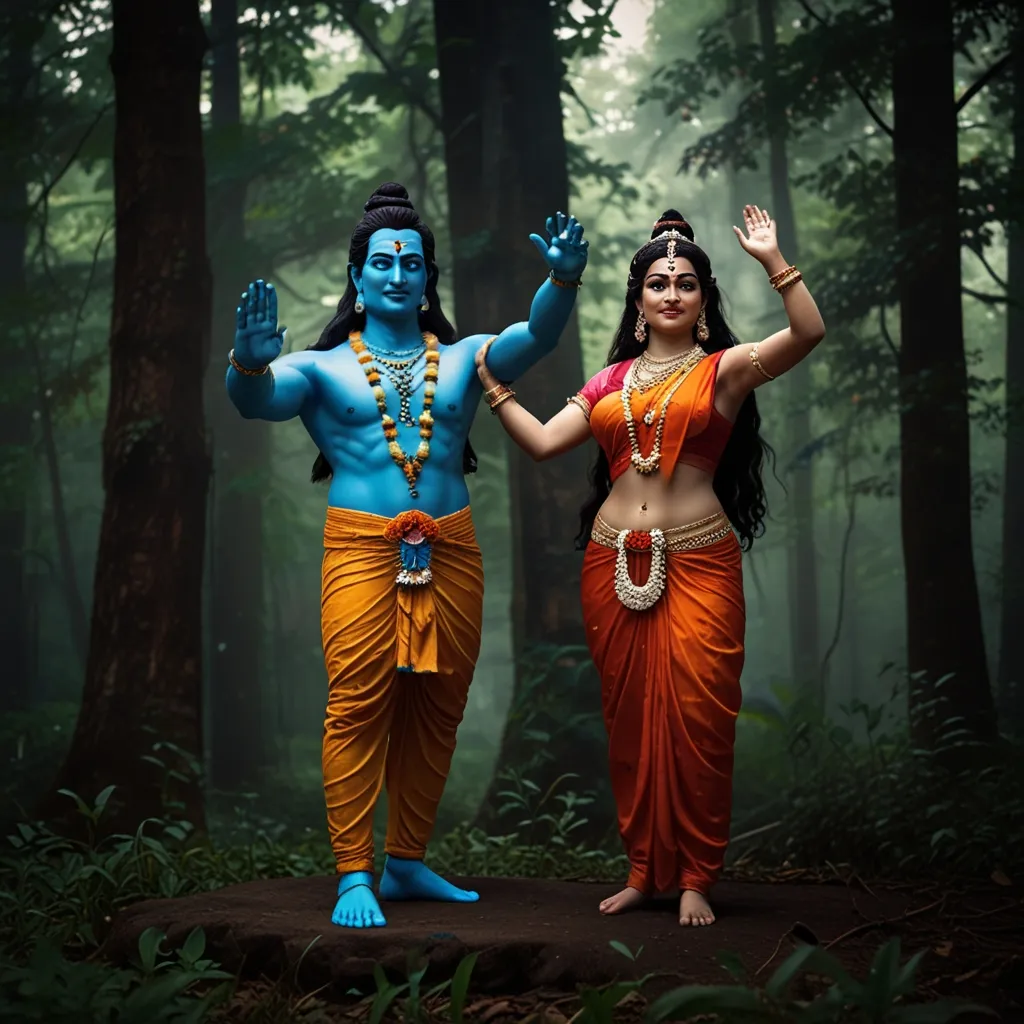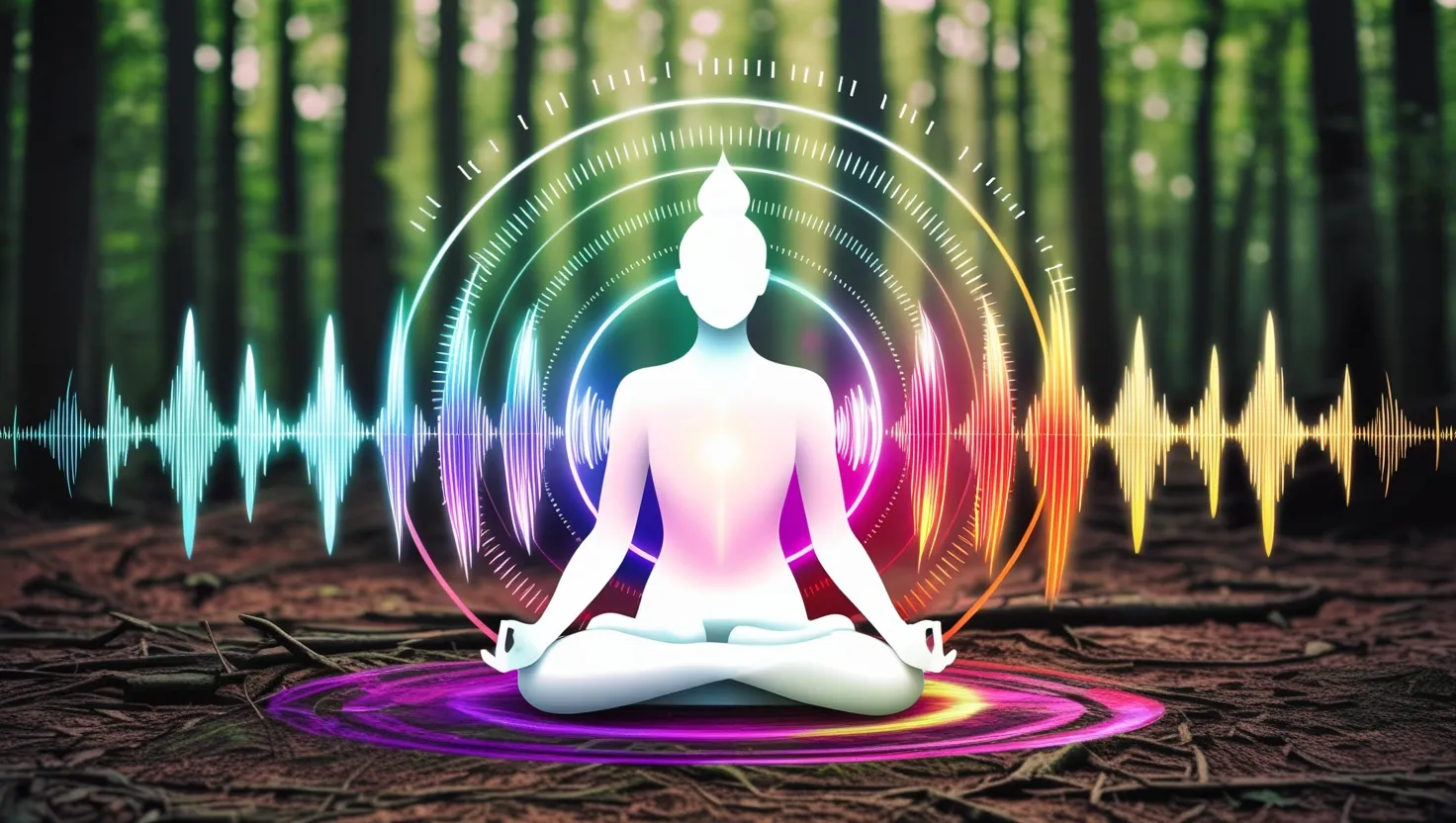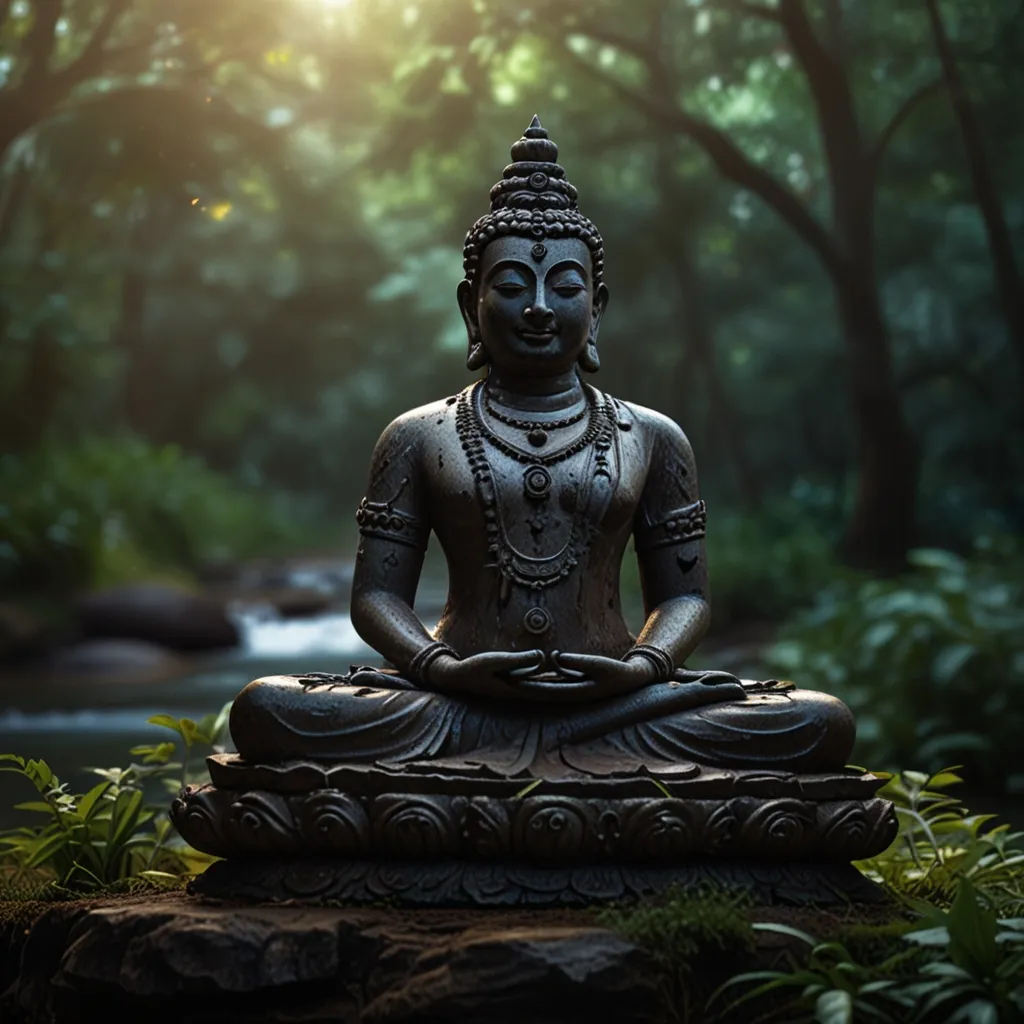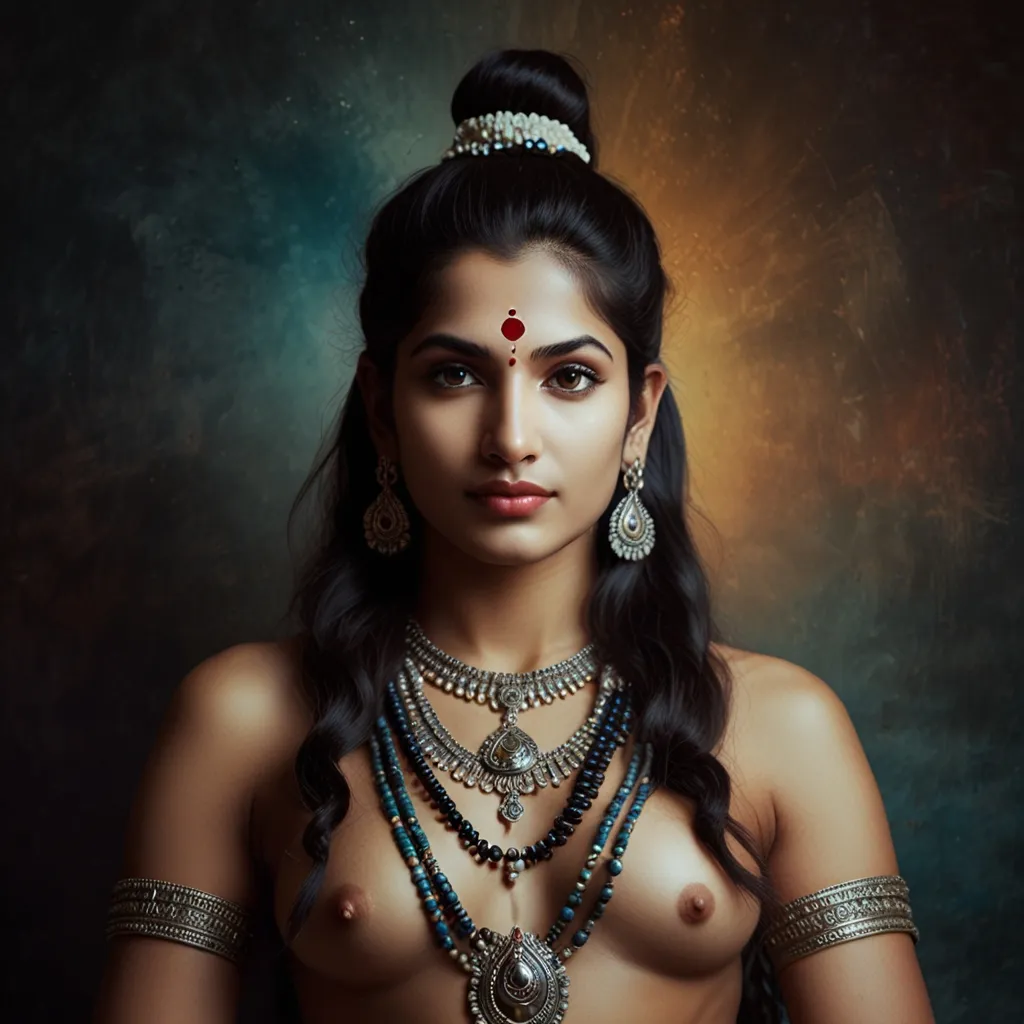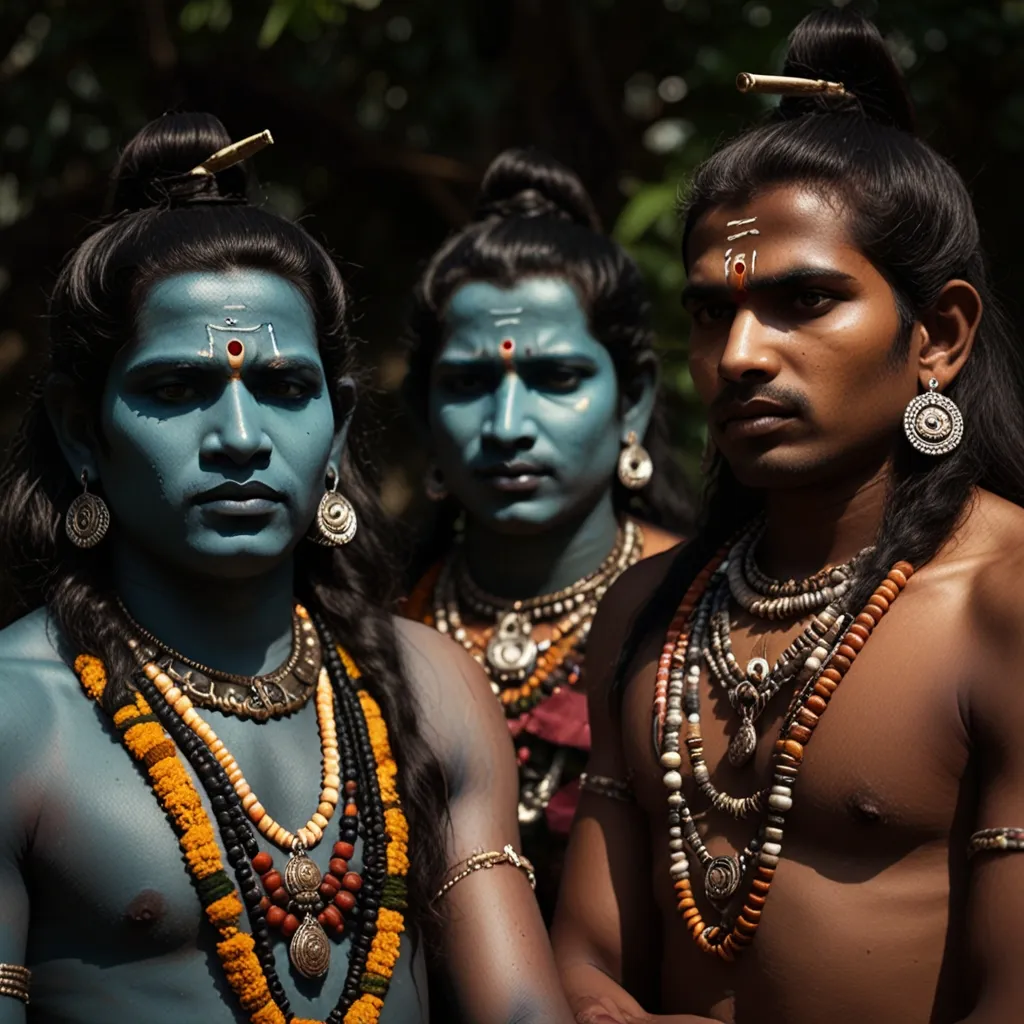In the realm of Hindu mythology, there’s this epic story about the creation of the Tandava dance, which is a dance ascribed to Lord Shiva himself. This tale doesn’t just recount the origins of this intense dance but also digs deep into its meaning and the massive influence it has on the universe.
The story kicks off in the Pushpabhuti forest, a sacred haven where sages and ascetics would often retreat to meditate and perform penance. Among these spiritual seekers was Tandu, a man with a big passion for dance and music. One day, Tandu, while wandering the forest, stumbled upon an irresistible, divine melody. Driven by his curiosity, he followed the enchanting sound until he found himself at a celestial dance contest led by none other than Lord Shiva and his divine partner, Parvati. The contest was accompanied by the celestial musicians, the Gandharvas, and the heavenly dancers, the Apsaras.
Tandu was absolutely blown away by the sheer beauty and power of Shiva’s dance. He soaked in every bit of it, observing the intricate details and mesmerizing movements. The dance, known as Tandava, was a high-energy, dynamic spectacle that perfectly showcased Shiva’s roles in both destruction and transformation. Tandu felt a burning desire to replicate this dance, convinced that mastering it would elevate his artistic skills and bring him closer to spiritual enlightenment.
After the majestic dance-off, Tandu approached Shiva and Parvati with utmost respect and humility. He showered them with praise and humbly requested to be taught the Tandava dance. Impressed by Tandu’s devotion, Shiva and Parvati agreed to fulfill his wish. They taught him the fundamental principles and techniques of the Tandava, stressing the importance of practicing it with great care. They also cautioned him against performing the dance in front of others because of its sacred and powerful nature, which could have unforeseen consequences if not performed correctly.
Determined to master the Tandava, Tandu returned to his hermitage. He poured his heart and soul into practicing, completely immersing himself in the dance’s transformative power. Through each movement, he felt a deeper connection with the cosmic order and the divine creative energy. The Tandava became a medium for him to express the profound emotions and experiences of the human soul, transcending words and bringing forth a divine art that pervades the universe.
Tandava isn’t just any dance. Hindu scriptures describe it as a vigorous performance that encapsulates the entire cycle of creation, preservation, and dissolution. It’s the heartbeat of the universe’s life cycle, from its birth to its inevitable end. Shiva, in his avatar as Nataraja, is often depicted performing the Tandava, highlighting his supreme role as the lord of dance.
There are several variations of the Tandava mentioned in Hindu texts, each with unique traits. The Ananda Tandava is all about joy and celebration, while the Rudra Tandava exudes a violent energy, representing Shiva’s destructive side. Other forms like the Tripura Tandava, Sandhya Tandava, Samhara Tandava, Kali Tandava, Uma Tandava, and Gauri Tandava each showcase different facets of Shiva’s power and the cosmic cycle.
The Tandava is more than just a physical dance; it’s a spiritual journey. It symbolizes the five primary manifestations of eternal energy: creation, preservation, destruction, illusion, and release. Comprising 108 karanas—specific hand gestures and foot movements—the dance forms distinct postures grouped into sections called angaharas. These are elaborately described in the Natya Shastra, an ancient Sanskrit treatise on the performing arts.
Shiva’s dance usually features Parvati, who performs the Lasya, a soft and graceful dance. The Lasya is considered the feminine counterpart to the Tandava, filled with graceful, sometimes sensual movements. Together, Shiva and Parvati create a perfect blend of power and grace, beauty and majesty, rhythm and melody.
The importance of the Tandava goes way beyond its physical expression. It’s a symbol of cosmic order and divine creative power. Shiva’s dance isn’t just about showing joy or anger; it’s a manifestation of the universe’s cycle of life. It serves as a reminder that creation and destruction are just different sides of the same coin and that each phase is crucial for the universe’s renewal.
In various tales within Hindu mythology, Shiva’s Tandava is often linked to major events. For instance, when his first wife, Sati, sacrificed her life at Daksha’s sacrificial fire, Shiva performed the Rudra Tandava in his grief and rage. This dance was so potent that it sent shockwaves throughout the entire universe.
There’s also the Shiva Tandava Stotra, a Hindu hymn said to be composed by Ravana, an ardent devotee of Shiva. This hymn details Shiva’s strength and beauty during the dance and emphasizes its profound impact on the cosmos.
The Tandava dance has been immortalized in Hindu art and sculpture across Indian temples. These ancient temples often depict Shiva in various Tandava poses, capturing every intricate detail of the dance. These aren’t mere artistic experiments; they’re spiritual representations aiming to encapsulate the essence of Shiva’s divine performance.
Wrapping up, the Tandava dance is a captivating and transformative tale embedded in Hindu mythology. It’s a story that transcends physical boundaries and dives into the spiritual and cosmic dimensions of existence. Through the Tandava, Shiva represents the cycle of creation, preservation, and destruction, reminding us of the eternal energy that fuels the universe. This divine dance stands as a testament to the power of art in expressing the deepest emotions and experiences of the human soul.
